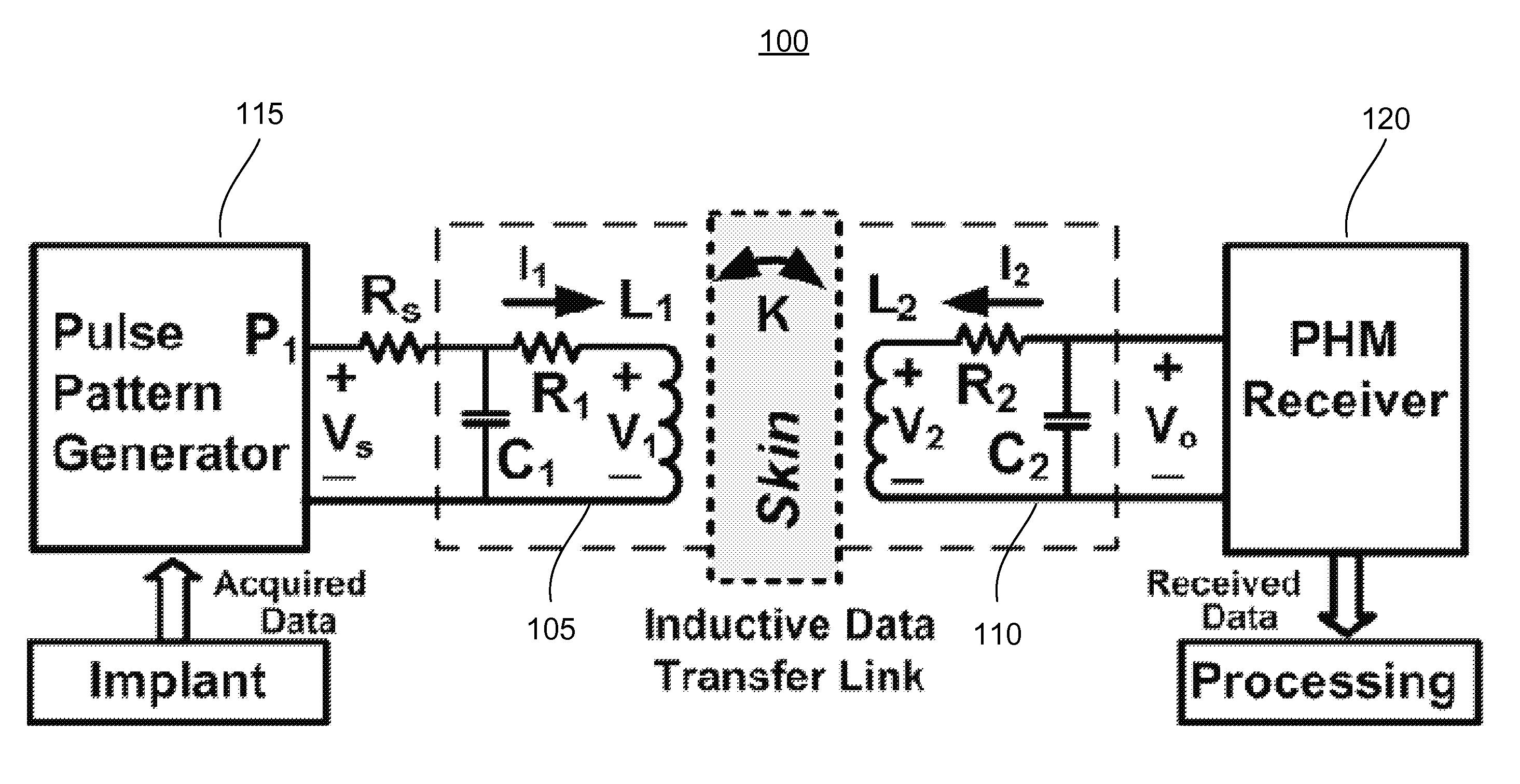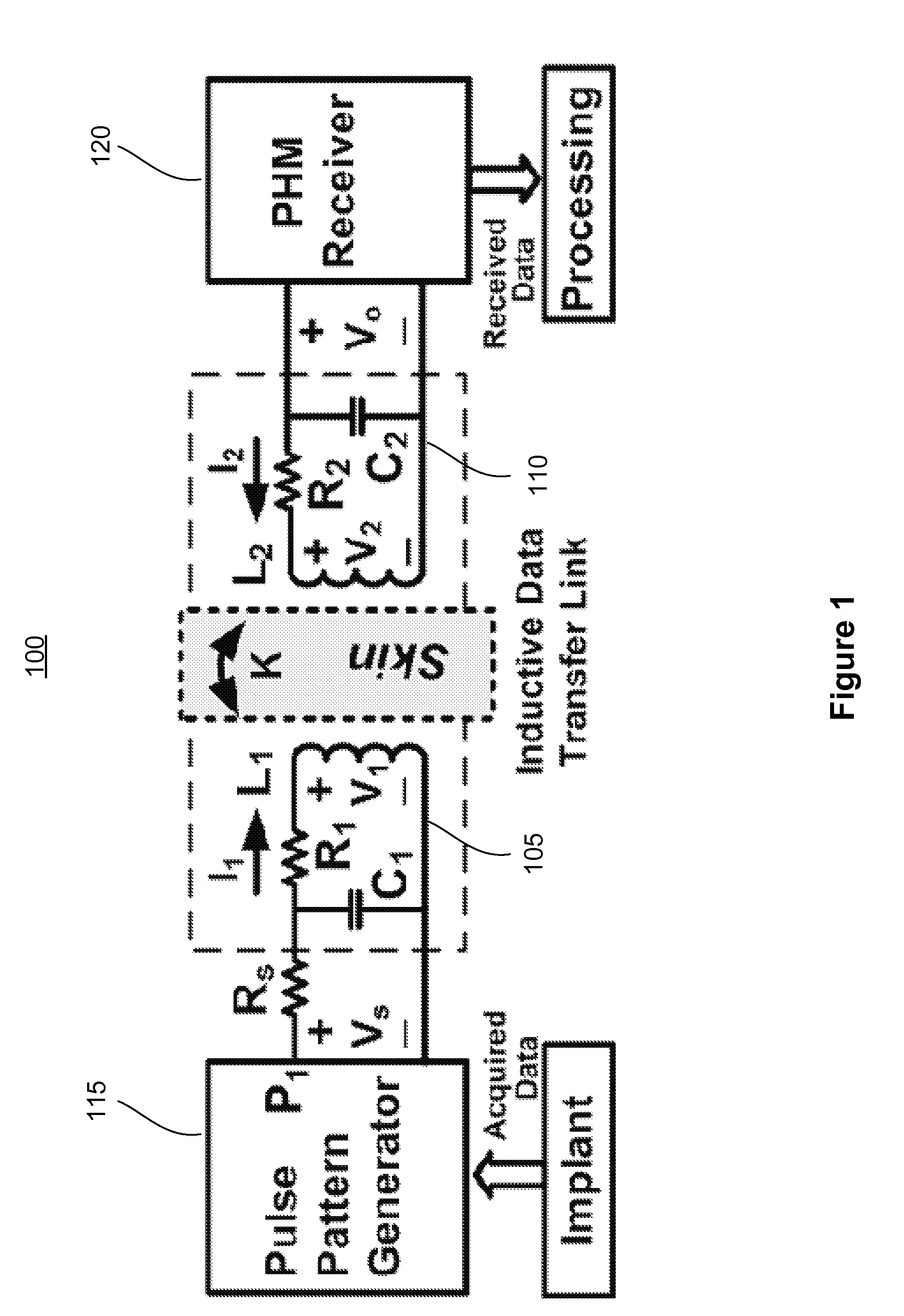Pulse Harmonic Modulation Systems And Methods
a harmonic modulation and pulse technology, applied in the field of pulse harmonic modulation systems and methods, can solve the problems of increased power loss, impracticality of high carrier frequencies for imds, high data transmission bandwidth, etc., and achieve the effect of reducing inter-symbol interferen
- Summary
- Abstract
- Description
- Claims
- Application Information
AI Technical Summary
Benefits of technology
Problems solved by technology
Method used
Image
Examples
Embodiment Construction
[0046]To facilitate an understanding of the principles and features of the present invention, various illustrative embodiments are explained below. In particular, the invention is described in the context of being pulse harmonic modulation systems and methods. Embodiments of the present invention may be applied to systems or methods for transmitting data via an inductive link. Embodiments of the invention, however, are not limited to use in systems and methods for transmitting data via an inductive link described herein. As those of ordinary skill in the art would understand, embodiments of the invention can be used by any systems or methods for transmitting data via an inductive link, including, but not limited to, IMD systems, RFID systems, contactless smartcards, MEMS, and the like. Additionally, embodiments of the present invention can be used to transmit data in both near-field and far-field applications.
[0047]The components described hereinafter as making up various elements o...
PUM
 Login to View More
Login to View More Abstract
Description
Claims
Application Information
 Login to View More
Login to View More - R&D
- Intellectual Property
- Life Sciences
- Materials
- Tech Scout
- Unparalleled Data Quality
- Higher Quality Content
- 60% Fewer Hallucinations
Browse by: Latest US Patents, China's latest patents, Technical Efficacy Thesaurus, Application Domain, Technology Topic, Popular Technical Reports.
© 2025 PatSnap. All rights reserved.Legal|Privacy policy|Modern Slavery Act Transparency Statement|Sitemap|About US| Contact US: help@patsnap.com



